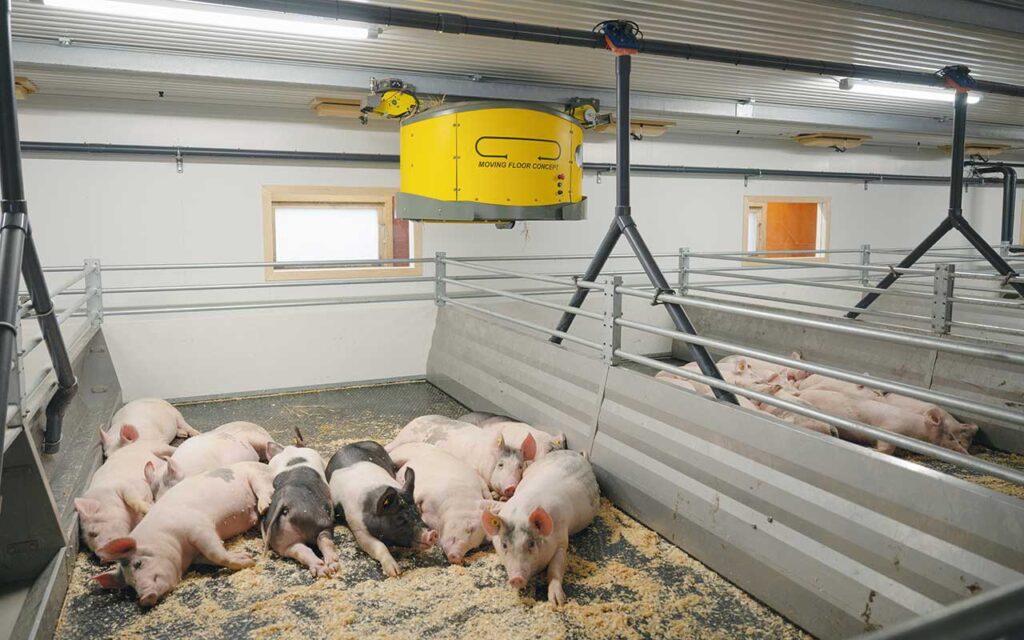With about one billion pigs worldwide, the pork sector produces significant quantities of emissions each year.
These emissions are now increasingly under scrutiny from governments around the world, many of which have introduced targets for reduction.
Due to the intensity of some indoor production systems, pigs can emit significant levels of ammonia in their faeces and urine, which can build up in the barns. While ammonia is not classified as a greenhouse gas, emissions can adversely affect pig health and have a negative impact on the environment.
With pork being the most-consumed meat in the world, accounting for more than 36% of total meat eaten, more pig housing is being erected to satisfy demand, but that also means increased emissions.
Technological solution
However, one company in Sweden has been examining that trend and has designed what it believes is the ultimate technology to help reduce emissions in the form of housing modules with rotating floors.
Aptly named Moving Floor, the company was founded and is owned by two sisters, Peg Soderberg and Katja Lindvall, with Peg in the role of CEO.
The company is based on the Swedish island of Gotland and has developed housing modules, initially for calves and now pigs, with a continual moving floor that effectively cleans itself by scraping away the manure and urine.
The conveyor belt rotating floor is powered by air compression requiring 8bar to operate at set time intervals.
The module weighs 1,200kg, measures 5.4×2.4m, covering an area of 11.6sq m, and is 1.6m high. It is a wooden structure covered in stainless steel, with an average energy consumption of less than 100 kWh/pig/year.
The company claims its system can cut ammonia emissions in pig buildings by up to 85% compared with normal pig housing.
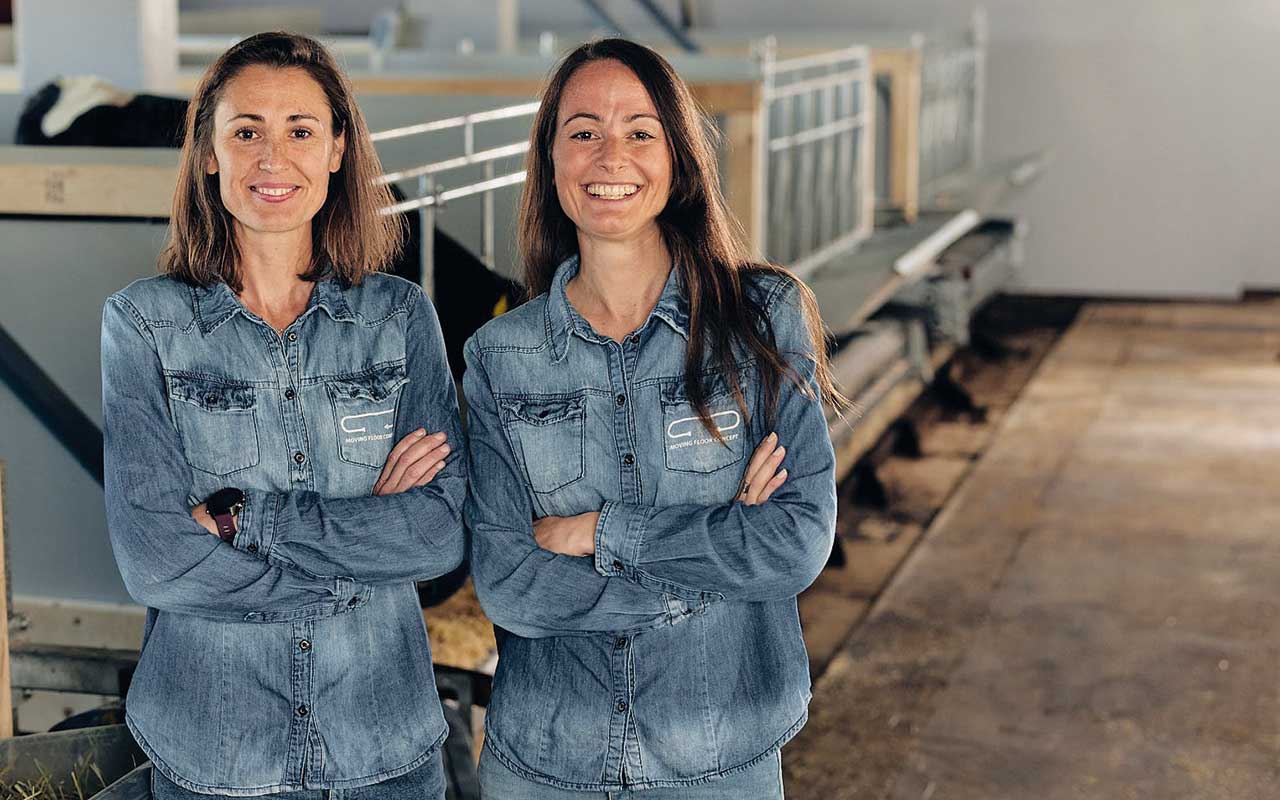
Demo barn
As part of an EU-funded project, Moving Floor hosts demonstration barns that have its technology built in on a farm outside Vasteras, owned by Tobias Pettersson, which produces 8,000 fattening pigs per year.
Moving Floor has renovated parts of the farm and operates its technology in four barns; one farrowing unit holding 12 sows, one nursery unit and two finisher units.
“In these barns, we run the automatically cleaned floors as well as our automatic bedding machines, and we are digitally measuring ammonia emissions every 15 minutes,” Peg explained.
As the floor rotates, the pig faeces is removed within two hours of a pig defecating, and after removal, the overhead bedding robot can deliver straw or sawdust, as programmed.
Moving Floor is operating different trials in the barns to assess the effectiveness of the technology. “We are taking measurements according to the VERA protocol, which includes ammonia, dust and smell. We are also piloting a composting drum for manure handling, with the idea of closing the loop of nitrogen as much as possible,” she added.
“Since we have rapid removal of faeces from the barn, we can minimise ammonia emissions in it, preserve the nutrients in the manure and strive for an energy-efficient process to turn the manure into a chemically stable organic fertiliser that can be spread in the fields.”
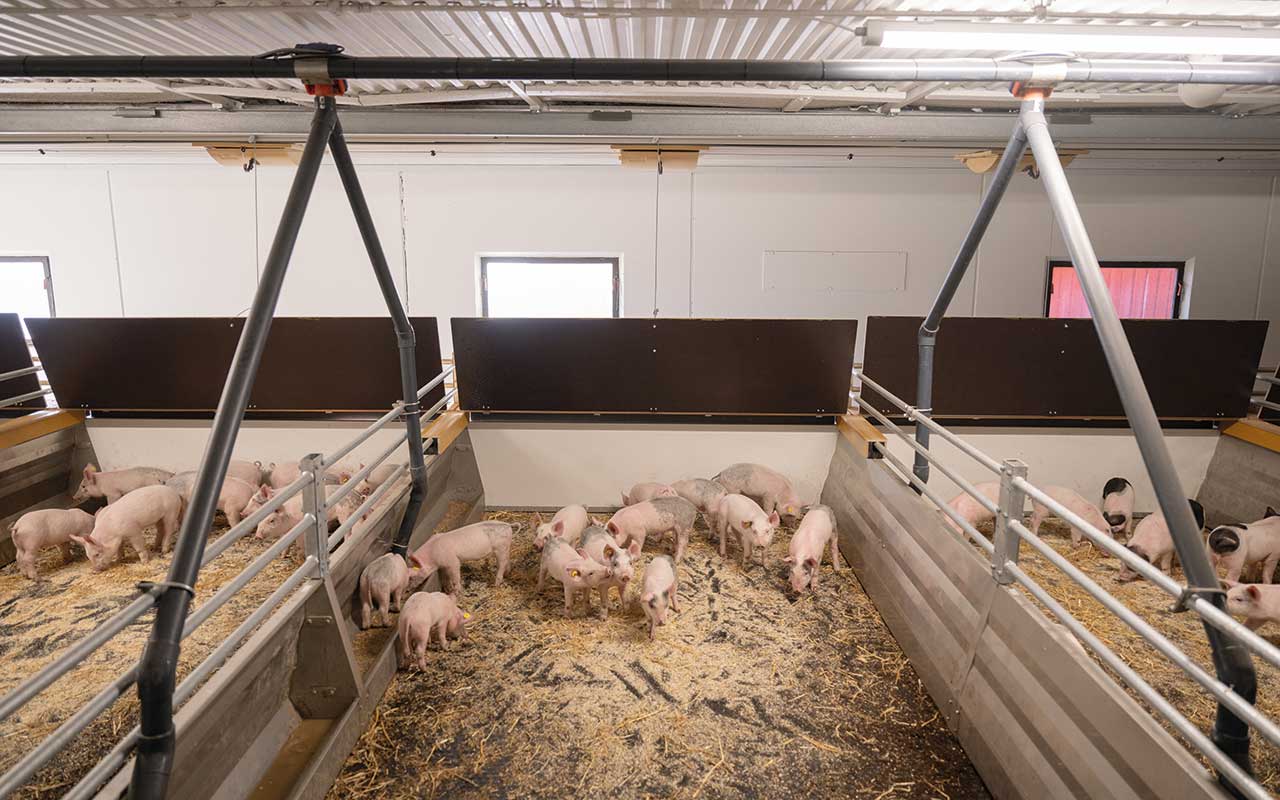
Welfare and health analysis
They have ear-marked and taken more than 17,000 pictures of the pigs, following them from birth to slaughter. The pictures are annotated by Prof Mate Zoric at the Swedish Veterinary Agency (SVA), and scored based on the condition of hooves, knees and belly.
SVA is also involved in analysing sickness and antibiotics consumption. An analysis of climate impact will be done by the Swedish Institute of Environment.
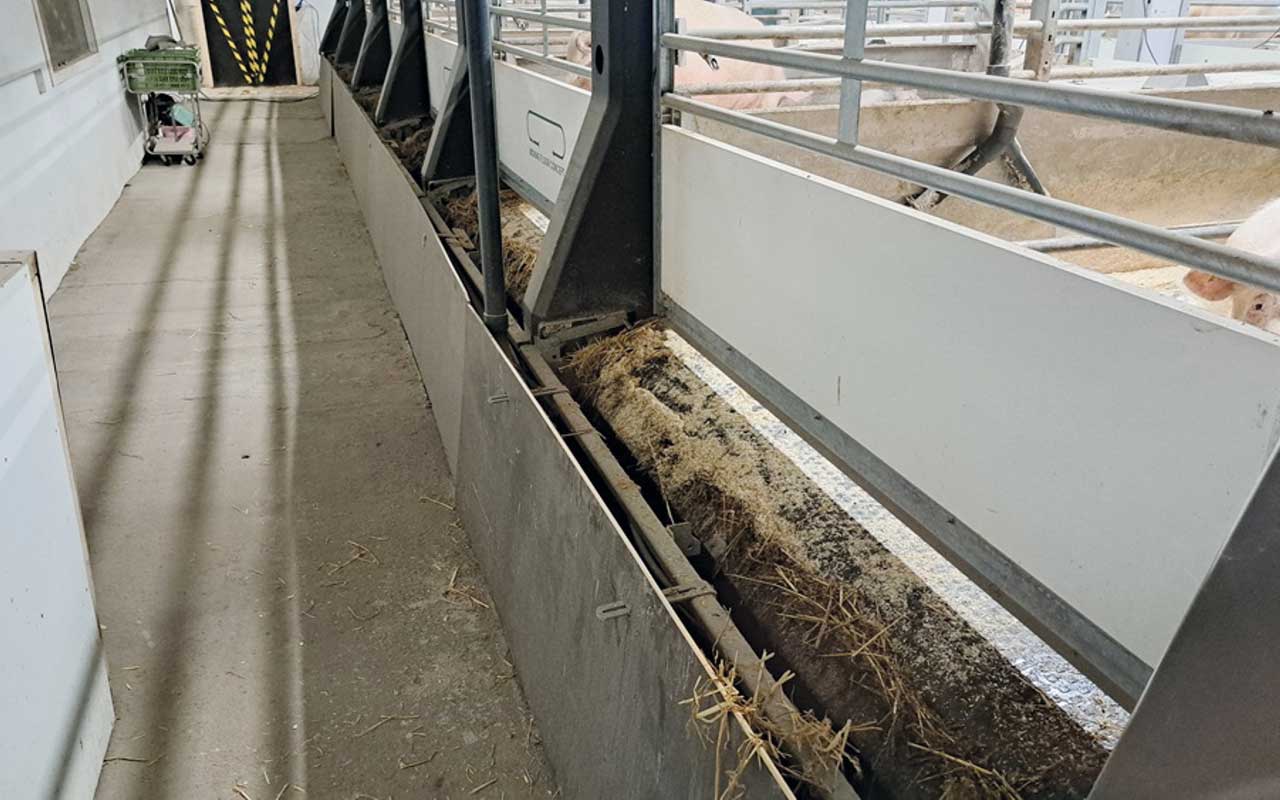
“We are already seeing indications of lower emissions of ammonia, pointing to us reaching the target of only 1.1kg per finisher place per year. Concentration of ammonia in the barns span from 2-5ppm generally, which is a good thing from an animal welfare perspective,” Prof Zoric said.
The Moving Floor modules can improve animal welfare by providing solid floors that can support the use of bedding and enrichment materials in the pig buildings. They also enable the stocking density to be varied, without it affecting the cleanliness of the floors.
The company says all of this can play a major part in stopping the need for tail docking, and providing a system more in line with consumer demands and expectations.
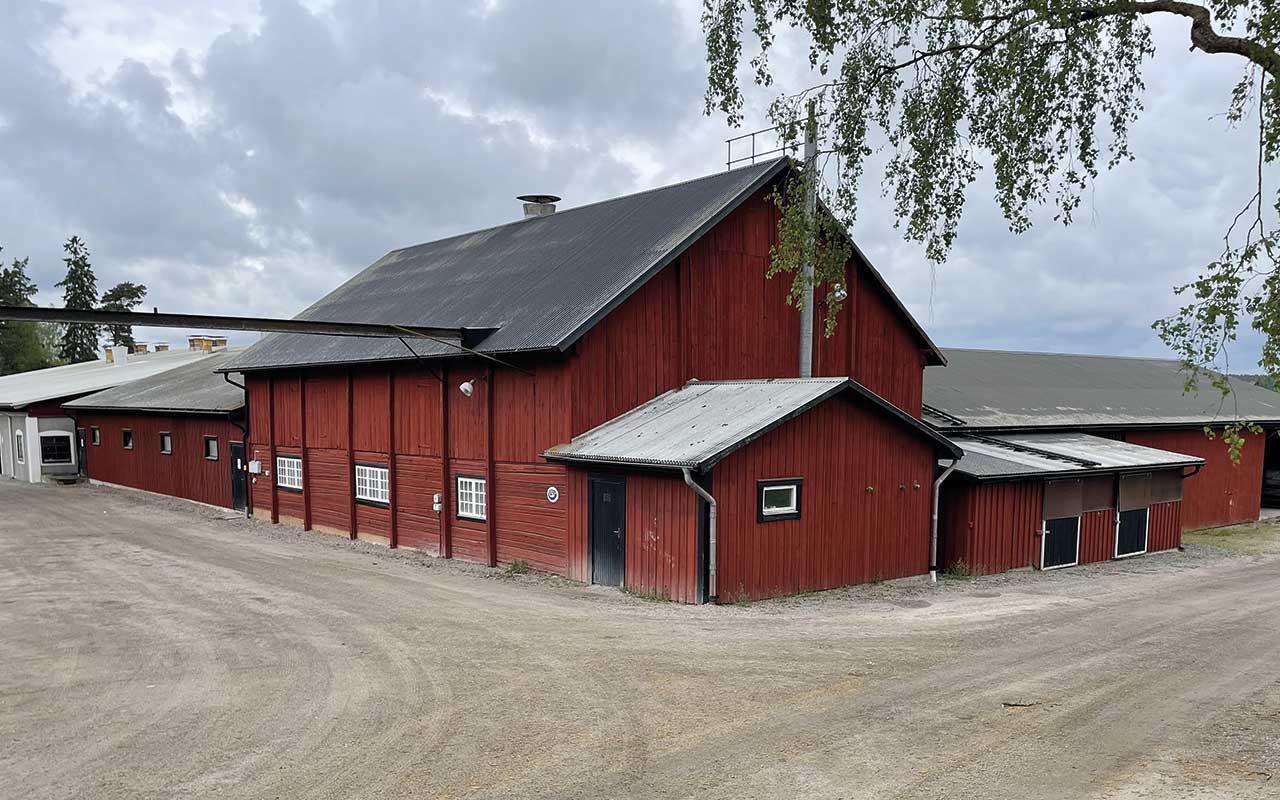
Performance
The Moving Floor system can be installed either in new barns or in older, established units. Animals kept in clean and hygienic conditions have a better chance of performance in terms of feed conversion and daily growth rates, the company points out.
The labour saving with the rotating floor modules is significant, compared with the laborious task of scraping concrete floors manually. Time and effort is also saved in the distribution of bedding.
Moving Floor says its goal is to provide automatic cleaning for barns and make this a new industry standard.
Peg added: “We hope Moving Floor can play a part in a quick transitioning of European farms towards becoming more sustainable and animal welfare-oriented.
“Looking ahead, we are working on a smart system to run the floors according to ammonia emissions. Basically, we set the allowed level of ammonia emissions on the specific farm and let the system run and optimise automatically based on algorithms.
“This will also make it possible for the farms to generate reports that can be sent to controlling bodies, for compliance with ammonia regulations.”
Moving Floor is telling pig producers that the average payback of its system is three years. The company has already fitted units across Europe and China, and is talking to potential customers in other regions.




